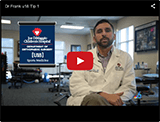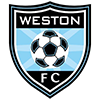Ganglion Cysts
Ganglion cysts are swellings that most commonly develop along the tendons or joints of wrists or hands. They can be found either at the top of the wrist, palm side of the wrist, end joint of a finger, or at the base of a finger. Ganglion cyst is not cancerous and will not spread to the other parts of the body. It looks like a water balloon on a stalk and contains a clear fluid or jelly material. Ganglion cysts can be found in people of all ages.
Although the exact cause of a ganglion cyst remains unknown some theories suggest that small cysts are formed when trauma damages the tissue of a joint. The most likely reason might be that these cysts occur because of a defect in the joint capsule or tendon sheath that permits the joint tissue to bulge outwards.
Ganglion cysts generally appear as a mass measuring from 1 to 3 centimetres in diameter. The swelling is usually soft and immobile. It may develop suddenly or gradually over time, vary in size or even disappear or reappear. Ganglion cyst may or may not be painful. If painful, the pain may be continuous and may worsen with the movement of the joint. If the cyst is attached to a tendon, one might feel weak in the affected area.
Your doctor will diagnose a ganglion cyst by performing various examinations starting with physical examination. The diagnosis is confirmed by needle aspiration or ultrasound. Needle aspiration is a process where some amount of the fluid in the cyst is withdrawn using a sterile needle. An ultrasound imaging can reveal whether the lump is solid or fluid filled (cystic). It can also determine if an artery or any blood vessel is causing the lump.
Magnetic resonance imaging (MRI) of the wrist may also be employed to diagnose ganglion cysts.
In many cases, these cysts may disappear without any treatment. Aspiration is performed to drain the fluid from the cyst using a needle. After aspiration, an anti-inflammatory steroid is injected into the empty cyst and a splint is placed to immobilize the area. If the cyst becomes painful or limits your activity, causes numbness or tingling of the hand or fingers, your doctor may recommend surgery to remove the ganglion cyst.
-
Personalized Physical Therapy Puts Bryant Back on the Court
Bryant could hear the whistles blowing as he walked by the gymnasium.
View more -
No off-season for sports injuries
As a new season of school sports and youth leagues gets underway,
View more -
Student Athletes Benefit from Individualized Treatment at U18 Sports Medicine
Becoming involved in a sport is one of the healthiest things that a child can do.
View more -
For young athletes, injuries need special care
More programs are using procedures and surgical techniques tailored for kids.
View more -
Dr Frank u18 Tip 1
 View more
View more -
Segment U18 Tip with Dr Frank 1
 View more
View more -
Dr. Frank’s 2010 WQAM high school football game halftime interviews
View more




 Menu
Menu






 In The News
In The News Hollywood Office
Hollywood Office

![[U18] Sports Medicine](https://www.kidbones.net/wp-content/themes/ypo-theme/images/u18-sports-medicine-performing-arts-logo.png)












